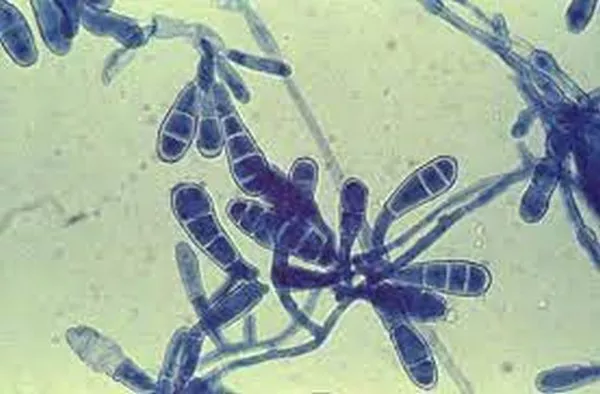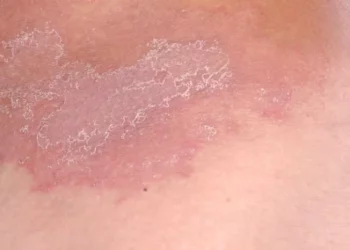Tinea corporis, commonly known as ringworm, is a superficial fungal infection of the skin. Despite its name, it has no relation to worms. The condition is caused by dermatophytes, a group of fungi that thrive on keratinized tissues such as the skin, hair, and nails. Tinea corporis can affect individuals of all ages and is characterized by round, scaly, and often itchy lesions on the body. Effective treatment is crucial not only to relieve symptoms but also to prevent the spread of infection. This article explores the best drug options for treating tinea corporis, focusing on their efficacy, safety, and practicality.
Understanding Tinea Corporis
Before diving into the treatment options, it is essential to understand the nature of tinea corporis. Dermatophytes, the fungi responsible for this infection, are classified into three genera: Trichophyton, Microsporum, and Epidermophyton. These fungi can be transmitted through direct contact with infected individuals, animals, or contaminated objects such as towels, clothing, and surfaces. Moist and warm environments, such as gyms and locker rooms, provide an ideal breeding ground for these fungi.
The clinical presentation of tinea corporis typically includes circular or ring-shaped lesions with clear or slightly inflamed centers and raised, scaly borders. The affected areas may be itchy, and scratching can lead to secondary bacterial infections. While tinea corporis is not life-threatening, it can cause significant discomfort and social embarrassment, underscoring the need for effective treatment.
Topical Antifungal Agents
For mild to moderate cases of tinea corporis, topical antifungal agents are often the first line of treatment. These medications are applied directly to the affected skin and are effective in eradicating the fungal infection.
1. Clotrimazole: This broad-spectrum antifungal agent is available over-the-counter and is commonly used to treat various fungal infections. Clotrimazole works by inhibiting the synthesis of ergosterol, a vital component of the fungal cell membrane, leading to cell death. It is typically applied twice daily for 2-4 weeks. Studies have shown that clotrimazole has a high cure rate and is well-tolerated with minimal side effects, making it a popular choice for treating tinea corporis.
2. Terbinafine: Terbinafine is another highly effective topical antifungal agent. Unlike clotrimazole, terbinafine works by inhibiting squalene epoxidase, an enzyme involved in ergosterol synthesis. This disruption causes an accumulation of squalene, which is toxic to fungal cells. Terbinafine is applied once or twice daily for 1-2 weeks, and clinical trials have demonstrated its superior efficacy and faster symptom resolution compared to other topical antifungals.
3. Ketoconazole: Available as a cream or shampoo, ketoconazole is another option for treating tinea corporis. It inhibits the synthesis of ergosterol, similar to clotrimazole. Ketoconazole is usually applied once daily for 2-4 weeks. While effective, it may cause local irritation in some individuals.
4. Miconazole: This antifungal agent also works by inhibiting ergosterol synthesis and is available in various formulations, including creams, powders, and sprays. Miconazole is applied twice daily for 2-4 weeks. It is effective and well-tolerated, with minimal side effects.
5. Econazole: Econazole is another imidazole antifungal agent with broad-spectrum activity. It is applied once or twice daily for 2-4 weeks. Clinical studies have shown that econazole is effective in treating tinea corporis, with a high cure rate and minimal side effects.
Oral Antifungal Agents
In cases where topical treatment is ineffective or the infection is extensive, oral antifungal agents may be necessary. These medications are systemically absorbed and provide a more aggressive approach to eradicating the fungal infection.
1. Terbinafine: Available in oral form, terbinafine is highly effective in treating tinea corporis. The usual dosage is 250 mg once daily for 2-4 weeks. Oral terbinafine is well-absorbed and has a long half-life, allowing for once-daily dosing. Clinical trials have demonstrated its superior efficacy compared to other oral antifungal agents, with high cure rates and rapid symptom resolution. However, it may cause side effects such as gastrointestinal disturbances, headache, and elevated liver enzymes.
2. Itraconazole: Itraconazole is another oral antifungal agent used to treat tinea corporis. It is usually prescribed at a dose of 200 mg once daily for 1-2 weeks. Itraconazole works by inhibiting the synthesis of ergosterol, similar to the topical azoles. While effective, it has a higher potential for drug interactions and side effects, including gastrointestinal disturbances, liver toxicity, and heart failure in susceptible individuals.
SEE ALSO: How Long is Ringworm Contagious in Kittens?
3. Fluconazole: This oral antifungal agent is often used to treat various fungal infections, including tinea corporis. The typical dosage is 150 mg once weekly for 2-4 weeks. Fluconazole works by inhibiting ergosterol synthesis and is well-tolerated with a low incidence of side effects. However, it may interact with other medications, so careful monitoring is necessary.
4. Griseofulvin: Griseofulvin is an older oral antifungal agent that works by disrupting the mitotic spindle in fungal cells, inhibiting their division and growth. It is typically prescribed at a dose of 500 mg once daily for 4-6 weeks. While effective, griseofulvin has a higher incidence of side effects, including gastrointestinal disturbances, headache, and photosensitivity. Additionally, it may interact with other medications, such as oral contraceptives and anticoagulants.
Combination Therapy
In some cases, a combination of topical and oral antifungal agents may be necessary to achieve complete resolution of the infection. This approach is often used in severe or refractory cases of tinea corporis, where a more aggressive treatment regimen is warranted. Combining topical and oral antifungals can enhance efficacy, reduce treatment duration, and lower the risk of recurrence.
Adjunctive Treatments
In addition to antifungal therapy, adjunctive treatments may be necessary to manage symptoms and prevent secondary bacterial infections. These may include:
1. Antihistamines: To alleviate itching and discomfort, antihistamines can be used. They are available over-the-counter and can help reduce the urge to scratch, which can prevent further irritation and secondary infections.
2. Topical Steroids: In cases of severe inflammation or itching, mild topical steroids may be prescribed. These can help reduce inflammation and alleviate symptoms. However, they should be used with caution and for a limited duration, as prolonged use can exacerbate fungal infections.
3. Emollients and Moisturizers: To maintain skin hydration and barrier function, emollients and moisturizers can be used. These can help soothe the skin and prevent further irritation.
Prevention and Hygiene
Preventing tinea corporis involves maintaining good hygiene practices and avoiding contact with infected individuals or contaminated objects. Key preventive measures include:
1. Regular Handwashing: Washing hands regularly with soap and water can help prevent the spread of infection.
2. Avoiding Shared Personal Items: Personal items such as towels, clothing, and grooming tools should not be shared to prevent transmission of the fungi.
3. Keeping Skin Dry and Clean: Moist and warm environments promote fungal growth, so it is important to keep the skin dry and clean. This includes drying thoroughly after bathing and using antifungal powders in areas prone to sweating.
4. Wearing Loose, Breathable Clothing: Tight clothing can create a warm and moist environment conducive to fungal growth. Wearing loose, breathable clothing can help prevent infection.
5. Cleaning and Disinfecting Surfaces: Regularly cleaning and disinfecting surfaces, especially in communal areas such as gyms and locker rooms, can help reduce the risk of transmission.
Conclusion
Tinea corporis is a common and treatable fungal infection of the skin. The choice of the best drug for treatment depends on the severity and extent of the infection. For mild to moderate cases, topical antifungal agents such as clotrimazole, terbinafine, ketoconazole, miconazole, and econazole are effective options with high cure rates and minimal side effects. In more severe or extensive cases, oral antifungal agents such as terbinafine, itraconazole, fluconazole, and griseofulvin may be necessary. Combination therapy and adjunctive treatments can further enhance treatment outcomes.
Preventing tinea corporis involves maintaining good hygiene practices and avoiding contact with infected individuals or contaminated objects. Regular handwashing, avoiding shared personal items, keeping the skin dry and clean, wearing loose, breathable clothing, and cleaning and disinfecting surfaces are key preventive measures.
By following these guidelines and seeking prompt treatment, individuals can effectively manage and prevent tinea corporis, ensuring healthy and comfortable skin.
Related Topics:



























